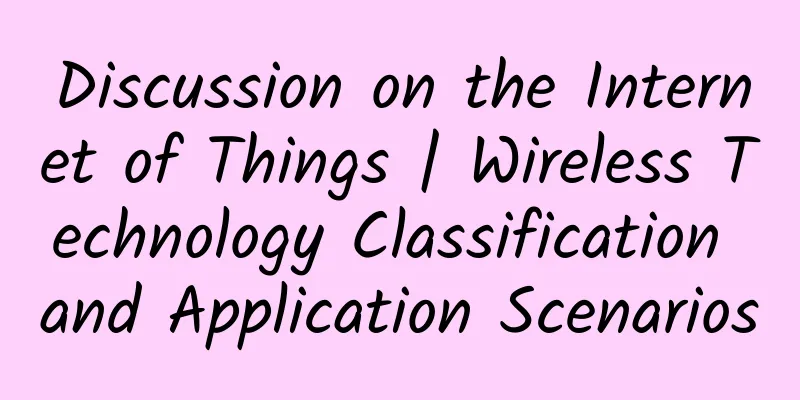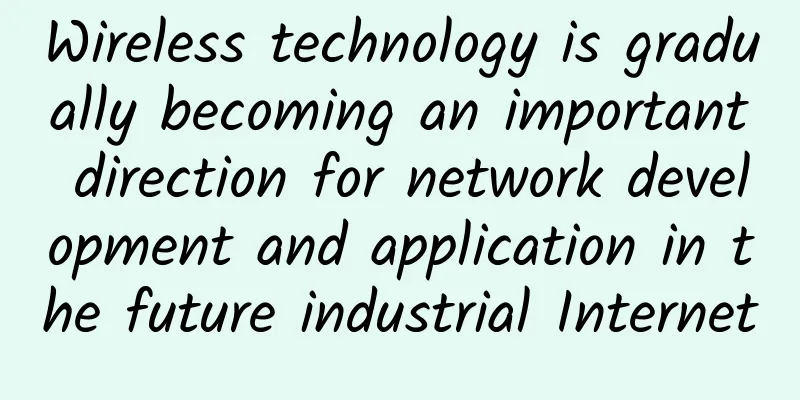Discussion on the Internet of Things | Wireless Technology Classification and Application Scenarios

|
The key technologies of the Internet of Things include three aspects: object identification, object connection, and data operation. As the number of networked objects increases, wireless technology plays an increasingly important role in the Internet of Things. IoT Wireless Technology Classification WiFi and Wireless USB are short-distance, high-speed technologies Common IoT wireless technologies can be divided into two categories according to their coverage:
Application scenarios of short-range wireless technology Due to the popularity of smart phones, the wireless technologies that we come into contact with more often in our daily lives are WiFi, Bluetooth and NFC, which are wireless connection capabilities commonly provided by smart phones. Similar to NFC, the main function of RFID is not for connection and communication, but for object identification. NFC is currently mainly used for mobile payments, such as UnionPay IC card flash payment, Apple Pay, etc. Short-range wireless technologies such as WiFi, Bluetooth, Zigbee and Z-Wave are often used in smart home applications. Currently, WiFi, Bluetooth and Zigbee technologies are widely used in the domestic smart home market. Z-Wave is similar to Zigbee and is a technical standard led by the Danish company Zensys. It is rarely used in China.
For IoT devices connected to WiFi, they generally support TCP/IP protocol and have IP addresses, so they can be directly connected to the Internet server through IP protocol. Users can also use mobile phone APP to remotely view or control IoT devices through IoT servers. For IoT devices connected by Bluetooth or Zigbee, there is no IP address and generally a gateway device is needed to access the network. Smart home gateways are equipped with network connections and connected to the router via WiFi or wired. In addition, the gateway generally integrates multiple communication protocols and also plays the role of protocol conversion.
Wide coverage: LPWA technology For outdoor scenarios that require wide coverage, the above wireless technologies are not suitable for application. Because IoT nodes are widely distributed and very dispersed, if each node is to be connected to a nearby router, a large number of routing nodes need to be deployed, which is costly and complex to deploy. Therefore, for this application scenario, long-distance wireless technology is very suitable. Different from the 3G and 4G that we usually use for mobile Internet access, the long-distance wireless technology required by the Internet of Things does not require high transmission rates, and requires extremely low power consumption, which belongs to low-rate and low-power wireless communication technology. This type of technology is generally referred to as LPWA (Low Power Wide Area), and NB-IoT and LoRa are both representatives. For detailed technical explanations of NB-IoT and LoRa, please continue to follow our headline channels: "Micro-Internet" and "Full Discussion on IoT Wireless Technology". |
>>: WiFi passwords are always cracked? Here are some tips to help you avoid WiFi hacks
Recommend
Virtual operators in the 5G era: new opportunities and challenges coexist
The 5G era will bring differentiated intelligent ...
Sharktech: Los Angeles 1Gbps unlimited traffic high-security server starting at $59/month
Sharktech has been offering a promotion for 1Gbps...
Do you know the misunderstandings about 5G?
Today I will reveal to you five misunderstandings...
Current status of Chinese domain names: low application level and potential security risks
Recently, at the Second China Domain Name Develop...
5G package users exceed 200 million, 5G mobile phones are accelerating into the popularization period
Recently, China Mobile, China Telecom and China U...
Simple and clear, the most powerful introductory 5G science popularization ever!
[[253735]] A simple and magical formula Today'...
5G optical fiber product network construction requirements
5G is a leading technology in the new generation ...
Liu Liehong: To get rich, we must not only build roads, but also build information highways
[[398027]] 2021-05-08 09:07Focus, broadcast on th...
10 questions to ask during TCP protocol interview
First show the mind map of this article TCP, as a...
In addition to the legend of getting rich quickly, what else is possible with blockchain?
The prevalence of various speculations has made b...
WIFi 5 Final Madness 2019 Wireless Router Market Report
In 2019, the wireless router market faced the fie...
Behind Baidu’s keyword search: Be aware of fraud risks and borrowing costs being raised in disguise?
[[387830]] Has Baidu failed to fulfill its duty i...
It’s time to consider leaf-spine network architecture
With the changes in traffic flows used in modern ...
MIIT: 4G and 5G will coexist for a long time, and 5G will not be built to dismantle 4G or limit speed
On August 22, Wen Ku, Director of the Communicati...
How 5G accelerates the development of the digital economy
Today, 5G construction is in full swing and gradu...









